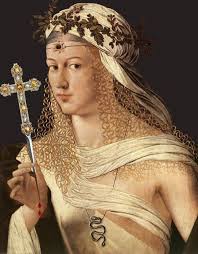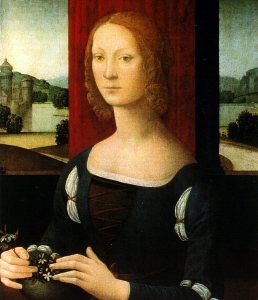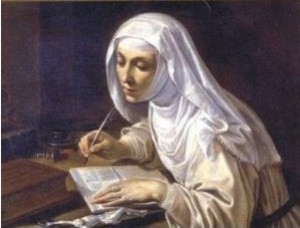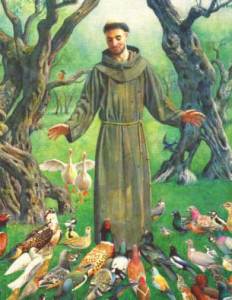3 Powerful Women of Renaissance Italy
Posted on March 19th, 2015 by Anna in Uncategorized | No Comments »
With Italy’s culture of machismo and deeply engrained gender roles, it can be difficult to think of women as serving a function beyond homemaker in Italian society. However, as with many countries, Italian history is filled with fascinating and dynamic women, you just have to dig a little deeper to find them. Renaissance Italy, in particular, with its focus on humanism and individuality afforded women (wealthy women, at least) the ability to become educated and ambitious. 
- Lucrezia Borgia. While history remembers her more for the colorful side of her reputation, mainly rumors of incest with her father, Pope Alexander VI, as well as a bout of serial poisonings, these have no historical evidence. What is known is that Lucrezia had a diverse political career, married to three different noblemen, some of whom were assassinated as they fell from the Pope’s favor. Working as a clerk in the Vatican, which was then a hotbed of lavish feasts and orgies, Lucrezia developed into a savvy businesswoman. As she matured, she became a patron of the arts, supporting various poets and artists, and put a lot of money into funding convents, hospitals, and roads in Ferrara.
- Caterina Sforza. Alchemist, huntress, dancer, and warrior, Caterina was widely schooled in Latin, the classics, and martial arts at the Sforza court, and she learned from an early age to be bold and imperious. Married at ten years old, she moved to the Roman court as a teenager and quickly became emb
 roiled in the politics of the time. In the chaos following the death of Pope Sixtus IV, Caterina held her husband’s fortress against intruders. Following her husband’s death, she became the regent of his lands for her sons. Her ruthless efficiency in ruling (she once ordered a swathe of mass executions and torture as revenge for her second husband’s assassination), as well as her rebellion against the forces of Cesare Borgia when he tried to annex her lands, earned her the nickname “The Tiger.”
roiled in the politics of the time. In the chaos following the death of Pope Sixtus IV, Caterina held her husband’s fortress against intruders. Following her husband’s death, she became the regent of his lands for her sons. Her ruthless efficiency in ruling (she once ordered a swathe of mass executions and torture as revenge for her second husband’s assassination), as well as her rebellion against the forces of Cesare Borgia when he tried to annex her lands, earned her the nickname “The Tiger.” - Catherine of Siena. Enduring as one of Italy’s patron saints, Catherine was a mystic and theologian of the early Renaissance, named by the Pope in 1970 as one of only four female Doctors of the Church. She began having celestial visions as a child and, following her joining the Sisters of Penance of St. Dominic, she had a prolific career of service out in the world. She became a trusted advisor of many political figures, in both secular and spiritual matters, and is said to have had a mystical marriage with Jesus, which a host of heavenly beings in attendance. The fact that she fasted stringently and is said to have gone for years without eating anything except the Eucharist wafer, may have had a hand in her visions and certainly in her death at 33. Nevertheless, she was a driven and determined woman, whose writings influenced many and are still read to this day.
If you’re curious to find out more about these amazing women’s lives, contact us for information on Italian courses, or to ask us who our favorite female historical figure is. Alternatively, take a look at our Italian courses for yourself.





